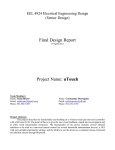Download Development Kit for 32-bit ARM Microcontrollers with a
Transcript
Recent Advances in Systems Science and Mathematical Modelling Development Kit for 32-bit ARM Microcontrollers with a Focus on Multimedia Applications TOMAS SYSALA, PETR NEUMANN, JAN PRIBYSLAVSKY, MILAN ADAMEK Department of automatic control Tomas Bata University in Zlin, Faculty of Applied Informatics nam. T. G. Masaryka 5555, 760 01 Zlin CZECH REPUBLIC [email protected] http://www.fai.utb.cz Abstract: - The article deals with a design and realization of a 32bit ARM core microcontroller development kit. The final solution is applicable in a laboratory for students enrolled for Microcomputers subject where programming and peripheral control is taught. That microcontroller kit is also possible to be employed as a cheap controlling device in various automation areas. As the development kit comprise even the network connection possibility, color display, and audio output, it can serve as a cost effective alternative for multimedia application development tool well comparable with many mobile phone applications. Key-Words: - Microcontroller, ARM, process control, education, development kit, multimedia 1 Introduction 3 The architecture selection Microcomputers and microcontrollers constitute a common ingredient in our daily life. We are meeting them without noticing it. Microcomputers as a cheap and small form of digital devices (computers) lived through their rapid development in early 80-ties of the last century. Those microcomputers were first in 8-bit version and later in 16-bit version then. The model Intel8080 [1] and/or Zilog Z80 [2] may be mentioned as the most popular models at that time. Microcomputers in 32-bit version with the ARM core gained popularity in more challenging application during 90ties of the last century. There were two fitting architectures, optionally also with relevant microcontroller type, for our design, namely ARM7TDMI and ARM Cortex-M3 architectures. In spite of the fact that we can find processors with the ARM7TDMI core in millions device throughout the World, that architecture dated to 1994 is declining, and the ARM company itself is not recommending it for new designs [3]. The Cortex-M3 architecture is its successor. The most remarkable difference lies in the fact that ARM7TDMI is based on the von Neumann architecture while Cortex-M3 is based on the Harvard architecture. From the practical point of view, the Cortex-M3 higher efficiency is related to its 1.25 DMIPS/MHz unlike the ARM7TDMI which offers only 0.95 DMIPS/MHz. The energy consumption comparison also favours the CortexM3 with 0.19mW/MHz unlike the ARM7TDMI with 0.28mW/MHz. The Cortex-M3 architecture disposes of many remarkable features. Among the others, we can mention the program branching prediction, the interrupt faster response (12 clock cycles vs. 24-42 clock cycles at ARM7TDMI), hardware implemented advanced debugging interface, reduced energy consumption modes, and a sophisticated memory lock system. There is a more detailed description of both architectures differences in the ARM company official report [4]. 2 Goal and specifications Many subjects taught at Tomas Bata University, Faculty of Applied Informatics, are oriented at technological processes control. The microcomputer presents one of alternatives for such processes control. The goal of one our project was to design a development kit based on a 32-bit microcontroller with the ARM core which should comply with following requirements: - Low costs, - Extended peripheral equipment for interfacing technological processes, - Extended peripheral equipment for various communication modes, - Audio codec, - Colour display. ISBN: 978-1-61804-141-8 328 Recent Advances in Systems Science and Mathematical Modelling All above mentioned qualities have influenced the final ARM Cortex-M3 architecture selection with LPC1769 microcontroller. with an input device offering two coordinates position. 4 The development kit components 5.2 The 24-bit stereo Audio CODEC The development kit does not comprise only the main board, but it includes many options for applications support as well. The support option set contains the following items: • Switching power supply adaptor 9 Volt • 3Mini USB cables • User manual • CD ROM with development environment demo version and with application examples • Colour OLED module • Transportable suit-case The 24-bit stereo Audio CODEC with I2S interface, integrated driver for headphones and 8 to 96 kHz sampling frequency support can exploit many audio functions. It integrates individual components like A/D converter, D/A converter, amplifiers and other supporting circuits. It creates an interface between the digital and analogue device part with bidirectional information flow. There has been the Texas Instruments TLV320AIC23B integrated circuit chosen for CM3board. That component is marked as IC7 [7]. It is a mixed signal circuit with digital and analogue ground potential separated. The supply voltage is also separated in similar way. That circuit integrates following functional blocks: • Two channels sigma-delta D/A converter, • Two channels sigma-delta A/D converter, • Power amplifier for headphones direct connection, • Input circuitry for electret microphone direct connection, • Digital interface for sound transfer, • Digital interface for circuit functions control, • Clock generator and timing circuitry. 5 The CM3 development board The further step was the interfaces and peripheries set for the board. 5.1 Colour OLED display module The colour OLED display module with resolution of 320x240, and with integrated intelligent controller, is the product of Australian 4D systems company [5]. That module is an encapsulated unit with entirely autonomous application possibility. The unit consists of OLED panel, intelligent controller, supporting circuits like supply voltage block and uSD card slot. uSD card can serve for storing bitmap files and animation sequences. Display module can communicate with external devices via RX and TX TTL signals similarly like an UART circuit. That communication variant is preferred in the CM3board design, and MCU LPC1769 reserves the UART1 port for it. This module can operate in two modes. In the first mode, it acts as a serial slave, and it executes commands sent to it. Those commands can comprise for instance, text or bitmap displaying, screen delete, or vector graphics drawing. In the second mode, it acts independently when its controller executes a program written in 4DGL script language 5.3 The Ethernet interface with integrated physical layer controller The LPC1769 does not implement the Ethernet physical layer feature like the native USB. It is realised with RMII interface here [8]. That interface is a reduced version (using lower count of signal lines) of the MII (Media Independent Interface). That is a device designed exactly for MAC device separation from physical layer (PHY circuit) what causes its complete independency. So it is possible to connect a MCU with a physical layer realised with any media (metallic cable, optical cable, wireless connection) without any influence on the MCU. The CM3board implements the Ethernet interface with a standard metallic cable. [6]. The serial communication here is also possible. The OLED display module has the resistive touch screen including relevant module for reading and calibration. From a designer point of view, it is possible to work with the touch sensitive surface as ISBN: 978-1-61804-141-8 5.4 The RS422/485 communication channel These interfaces are both implemented with the only integrated IC17. Nevertheless, only one interface mode at time can be operated. That IC17 is 329 Recent Advances in Systems Science and Mathematical Modelling connected to MCU via jumpers so that it is possible to disconnect them easily. For case cards are inserted in slots during disconnection, their data lines have pull-up resistors to ensure their logic levels to be defined. There is no card type support hardware-wise defined. As all MMC, SD, SDHC, and new SDXC cards are hardware-compatible, the particular card support is selectable with software support. The theoretical SDXC memory capacity limit is up to 2 TB. ordinarily designed for the RS485 mode and the RS422 mode changes to the point-to-point topology. 5.5 Sensors for non-electrical quantities Our development kit also supports the non-electric quantities measurement, like illumination intensity, temperature and acceleration. The temperature sensor represents the IC22 circuit. That circuit measures temperature in the range between -55°C and +125°C. It can act not only as a continuously measurement unit but also a thermostat. If temperature exceeds the set limit, that circuit issues the interrupt signal on the TSINT line. That signal appears at the MCU common input pin so that it cannot cause a real interrupt response. Only in case of necessity, that pin state is to be monitored by software. That signal can be optionally disconnected. CM3board holds the ambient light sensor IC20 for the display brightness control, and for the push buttons backlight control. Like the temperature sensor, it has an interrupt signal output for a situation when the ambient light exceeds the set limit. That circuit has an internal filter for flickering rejection at frequencies of 50 Hz and 60 Hz what is a frequent problem at artificial light sources. The ambient light is sensed with two integral photodiodes. One of them is sensitive only for the infrared spectrum the other one senses the infrared and visible spectra together. That two-photodiodes combination optimizes the sensor sensitivity close to the human eye characteristics. Accelerometer detects vibrations, drops, tapping (for example on the display), position change or mechanical shock. The acceleration sensing unit is represented by IC21. 5. 6 Further important kit components The list of further important development kit components follows: • Native USB 2.0 interface with Device, Host, and OTG support • USB-UART converter with virtual serial port • Integrated D-class amplifier, and two miniloudspeakers for loud listening incorporated in the board • JTAG port for testing and application debugging • Rozhraní CAN bus se dvěma nezávislými kanály • Wireless XBEE module • Eight user push-buttons with programmable LED backlight and innate I2C bus expander • Two rotary encoders • Serial 8 kB I2C EEPROM • Extension connector for external user hardware connection 5. 6 Data storing CM3board contains the 8 kB external EEPROM memory with I2C bus. That memory is represented by IC19 (36) circuit and its address can be jumper adjusted. That memory can store a small data amount like device user configuration, events log, errors log, and/or peripheral device measurement data. If we need to store larger amount of data, like audio files, image files, long term recorded data, or MCU new firmware files, CM3board offers two slots for either SD card or for X8 and X9 MMC card. These cards are mutually independent and each card communicates via autonomous SPI bus with DMA channel utilisation possibility. The slot power supply is separated with LC filters which are ISBN: 978-1-61804-141-8 Fig. 1 – Prototype development kit 330 Recent Advances in Systems Science and Mathematical Modelling The final device has a variety of applications comprising both the student laboratory educational activities and the cheaper control devices development for various automation areas. 6 Software There is possible to utilize many development environments for application software design. Each of them has its advantages and disadvantages, like price, user-friendliness, nonstandard functions utilization etc. 8 Acknowledgement Among most exploited development environments, we can mention Eclipse with Cygwin GNU ARM Tool-chain [9] or YAGARTO supplements, furthermore Keil, IAR, Red Suite. That is the Red Suite light version named LPCXpresso which has been used in our project. Although it supports only C programming language, and the program size is limited to 128 kB, it represents a so called download limit what means the program size to be written and developed with the help of debugger. There is no limit for program compilation. This is a free version and it represents an excellent combination with identically named development tools by Embedded Artists company. The microcontroller operation control is exclusively managed by the user. There has been created a simple demonstration program for CM3board. The demonstration of multimedia elements is pre-eminently accented in that program. The multimedia demonstration is aimed at the static pictures stored in the touchsensitive OLED module SD card browsing. We can summarize the individual steps of demo application design in following items: • OLED module application design aimed at the graphics loading and displaying including the serial communication with the CM3board. • Controller design for the PCA9555 circuit embedded in the CM3board. • Creation of the push-buttons operation library for PCA9555 disposal. • A simple protocol design for communication between OLED module and CM3board. • Application layer creation with the help of FreeRTOS system. Except for the above mentioned items there were also other software elements used for our application: • FreeRTOS system libraries, • CMSIS library, • LPC1769 circuit peripheral controllers. The authors wish to thank to the Ministry of Education, Youth and Sports of the Czech Republic (the European Regional Development Fund under the project CEBIA-Tech No. CZ.1.05/2.1.00/03) for financial support. References: [1] Intel Museum: Journey Through Decades of Innovation, Intel Corporation, [Online] 2012. http://www.intel.com/content/www/us/en/comp any-overview/intel-museum.html. [2] Zilog Embedded in Life, Zilog, Inc., in[Online] 2012. [3] ARM7 Processor Family - ARM. ARM - The Architecture For The Digital World. [Online] 2012. http://arm.com/products/processors/classi c/arm7/index.php. [4] Sadasivan, Shyam. An introduction to the ARM Cortex-M3 Processor. ARM – The Architecture For The Digital World. [Online] 2006. http://www.arm.com/files/pdf/IntroToCo rtex-M3.pdf. [5] 4D Systems, Research and Development. 4D Systems, Research and Development, [Online] 4D Systems Pty Ltd, 2007. http://www.4dsystems.com.au/ [6] 4DGL programmers reference manual. 4D Systems, Research and Development, [Online] 4D Systems Pty Ltd, 2010. http://www.4dsyste ms.com.au/downloads/4DGL-Docs/4DGLProgrammers-Reference-Manual-rev2.pdf. [7] Analog, Embedded Processing, Semiconductor Company, Texas Instruments. Analog, Embedded Processing, Semiconductor Company, Texas Instruments. [Online] Texas Instruments Incorporated, 1995- 2012, http://www.ti.com/lit/ds/symlink/tlv320aic23b. pdf. [8] RMII Specification. National Semiconductor| High-performance Analog. [Online] 2012, http://www.national.com/as sets/en/other/rmii_1_2.pdf. [9] C., Rick. GNU ARM toolchain for CygWin, Linux and MacOS. GNU ARM toolchain for CygWin, Linux and MacOS. [Online] 2006. http://www.gnuarm.com/. 7 Conclusion There has been a new 32-bit ARM core microcontroller development kit designed in the frame of our project. A prototype has been manufactured for all required functions verification. ISBN: 978-1-61804-141-8 331




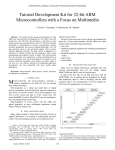



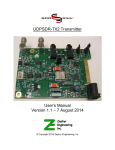
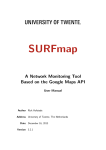
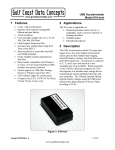
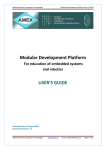
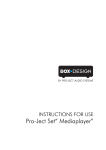

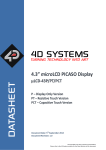


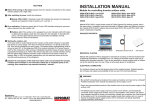
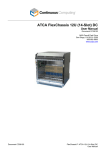
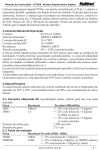
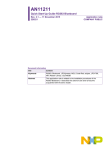
![PNOZmulti Architecture (PDF/931Ko) [F]](http://vs1.manualzilla.com/store/data/006362332_1-123acaa30577e39eb348f8c8ed3f8b89-150x150.png)
